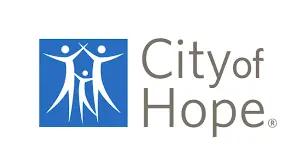Episode Highlights
0:24 | Interest in Oncology
2:00 | Biggest Advancements in GU Oncology
6:37 | Importance of Educational Meetings
8:10 | About His GU ASCO Study
11:30 | Potential for Incorporating This Therapy in Clinical Practice
13:17 | Potential Future Indications
16:16 | Personal Thoughts on This Research
17:12 | Advice for Other Fellows
In our fifth episode of Emerging Experts, Peter Zang, MD, clinical resident/fellow at City of Hope Comprehensive Cancer Center, discusses his journey to City of Hope and highlights his research on baseline CD8 lymph node avidity with 89-Zr-crefmirlimab for the treatment of patients with metastatic renal cell carcinoma (RCC) and response to immunotherapy (NCT03802123).
Crefmirlimab is an 89-Zr-labeled antibody with specificity for CD8-positive cells. Prior data of the agent has shown a strong correlation with standardized uptake value (SUV) uptake and immunohistochemistry of the same lesions validating its use. Because of this, Zang and fellow researchers predicted that responders to immunotherapy would have higher CD8 lymph node avidity compared with nonresponders.
To evaluate this hypothesis, experts began a study of patients with metastatic RCC who have received immunotherapy. A total of 17 patients were enrolled and given a crefmirlimab positron emission tomography (PET)/CT within 1 week before convalescent plasma infusion as baseline. Nine patients were locally available for analysis.
The median age of those enrolled was 64 years of age (range, 54-71) with histology types consisting of clear cell (71%), papillary (12%), and indeterminate (17%). Among those enrolled, there were 3 responders (18%), 12 nonresponders (71%), and 2 nonevaluable (12%) patients.
Findings from the study were presented at the 2024 Genitourinary Cancers Symposium showing that the most common treatment regimens patients received were cabozantinib (Cabometyx) plus nivolumab (Opdivo; 44.44%), nivolumab alone (33.33%), and ipilimumab (Yervoy) plus nivolumab (22.22%). There was a strong correlation observed between CD8 cell density and SUVMean (P <.0003).
According to Zang, these data show that patients with a higher number of CD8 PET-avid lymph nodes at baseline had better response to immunotherapy. Additionally, those who were deemed responders also had overall higher SUV uptake in CD8 PET-avid lymph nodes compared with nonresponders.
“This technology could help in the sense that if someone has more avidity on this special PET scan, indicating they have a higher density of CD8 T cells, maybe they would be someone that would benefit more from a dual [immunotherapy]. In a way it kind of personalizes treatments for patients so that they get the maximum benefit of whatever treatment that they end up receiving,” says Zang.
These findings suggest that patients who have a more enriched CD8 phenotype tend to have better outcomes and that this may be a reliable predictor for immunotherapy response.
“The next step is going to be applying this to a larger cohort of patients, which is already being done,” explains Zang. “If we put it to a bigger sample size and we still see that signal, I think it would give it more legs as a tool that we can maybe start using in the clinic for patients.”
REFERENCE:
Zang DP, Twardowski P, Chen DL, et al. Baseline CD8 lymph node avidity with 89-Zr-crefmirlimab in patients with metastatic renal cell carcinoma and response to IO therapy. J Clin Oncol. 2024;42(suppl 4):375. doi:10.1200/JCO.2024.42.4_suppl.375












































